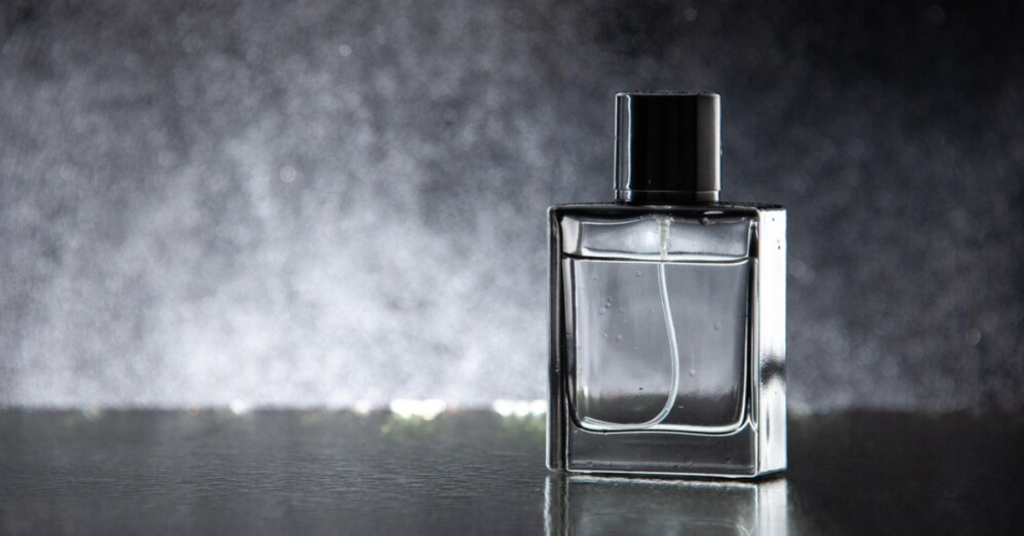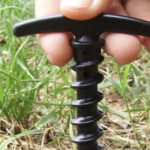Perfumes are more than just fragrances; they are a symbol of luxury, style, and personal expression. However, the global fragrance market, worth billions, is plagued by counterfeit products. To tackle this issue, manufacturers use various methods to ensure authenticity, with one of the most reliable being the “código de barras” or barcode system. But what do these barcodes mean, and how can they help you confirm the authenticity of your perfume?
In this guide, we’ll explore the role of barcodes on perfumes, how they help in identifying genuine products, and provide practical tips on how to read them. Whether you’re a perfume enthusiast or simply want to ensure you’re getting the real deal, this article will help you make informed decisions.
What is a ‘Código de Barras’?
A ‘código de barras,’ or barcode, is a machine-readable code that includes a series of numbers and black and white bars. These codes hold important information about the product, like the manufacturer, country of origin, and sometimes even the batch number and expiration date.
For perfumes, barcodes serve multiple key functions:
- Product Identification: Barcodes provide a unique identifier for each product, aiding in tracking and inventory management.
- Authentication: Barcodes can be checked against databases to verify the product’s authenticity.
- Consumer Protection: Scanning the barcode can give consumers access to detailed product information, helping them make informed purchases.
How Barcodes Work on Perfumes
Barcodes on perfumes are not just a series of lines and numbers; they are part of a complex system designed to ensure authenticity and traceability. Here’s how they work:
1. Product Identification
Each barcode is unique to the product and its specific batch. This uniqueness helps with inventory management and ensures that the correct product is available at retail locations.
- Global Trade Item Number (GTIN): This is a unique identifier for products, embedded within the barcode. For perfumes, the GTIN ensures that each fragrance variant has a distinct code.
- Manufacturer Code: Part of the barcode identifies the manufacturer, crucial for verifying the product’s legitimacy since each genuine perfume should trace back to its maker.
2. Authentication and Anti-Counterfeiting
Barcodes are a frontline defense against counterfeit perfumes.
- Database Cross-Reference: Many brands maintain a database of their barcodes. Scanning the barcode and comparing it with the database can confirm whether the perfume is genuine.
- Batch and Serial Numbers: Some barcodes include batch or serial numbers, providing information about the specific production run. This data is vital for quality control and product traceability.
3. Consumer Access to Information
Barcodes also provide consumers with easy access to product information in today’s digital age.
- Barcode Scanning Apps: There are various apps that allow consumers to scan barcodes to retrieve product details, reviews, and authentication status, empowering buyers to make informed choices at the point of sale.
- QR Codes: Some perfumes use QR codes along with traditional barcodes, offering a more interactive experience by linking directly to the product’s webpage or promotional content.
How to Read and Understand Perfume Barcodes
Understanding a perfume’s barcode can help you identify authentic products. Here’s a step-by-step guide to decoding barcodes:
Step 1: Identify the Barcode Type
Perfumes usually use standard barcodes, such as the EAN-13 (European Article Number) format, which consists of 13 digits divided into sections:
- Country Code: The first 3 digits indicate the country where the manufacturer is registered, not necessarily where the product is made.
- Manufacturer Code: The next digits represent the manufacturer and are assigned by GS1, a global barcode standardization organization.
- Product Code: This part identifies the specific product. Different scents or sizes will have different product codes.
- Check Digit: The last digit is a check digit used to verify that the barcode is correctly composed.
Step 2: Use a Barcode Scanner
With barcode scanning apps widely available on smartphones, checking a perfume’s barcode is simple:
- Download a Trusted App: Apps like “Barcode Scanner” or “ScanLife” can scan barcodes and provide product information instantly.
- Scan and Verify: Scan the perfume’s barcode. A genuine product will display details that match what’s on the packaging.
Step 3: Cross-Reference Information
To further verify authenticity:
- Check with the Manufacturer’s Database: Some brands have online tools to verify barcodes. Enter or scan the code to confirm the product’s legitimacy.
- Ensure Consistency: Verify that the product details from the barcode match the packaging and what’s advertised.
Common Errors and Misconceptions About Perfume Barcodes
While barcodes are helpful in identifying authentic products, there are some common misconceptions and errors to be aware of:
1. Not All Barcodes Offer Authentication
Not every perfume barcode links to a database for consumer verification. Some brands use basic barcodes solely for inventory purposes, without providing detailed authentication information.
2. Barcodes Can Be Replicated
Sophisticated counterfeiters can replicate barcodes. Therefore, while a matching barcode is a positive sign, it should not be the only method of verification. Always consider other factors like packaging quality, seller reputation, and price discrepancies.
3. Country Code Doesn’t Indicate Manufacturing Location
The country code in the barcode reflects where the company is registered, not where the perfume is manufactured.
4. Errors in Barcode Scanning
Sometimes barcode scanners can misread or fail to read barcodes due to damage, printing errors, or poor lighting conditions. If this happens, try scanning again or use a different app.
Additional Tips for Identifying Genuine Perfumes
Beyond barcodes, there are other signs to look for when verifying the authenticity of a perfume:
1. Check the Packaging
Authentic perfumes usually have high-quality packaging. Look for:
- Seals and Wrapping: Genuine perfumes often have tightly sealed plastic wrapping. Poor wrapping or missing seals can be a warning sign.
- Print Quality: Check the quality of the fonts, logo, and overall printing. Counterfeits often have slight variations or lower-quality printing.
- Box Construction: Authentic boxes are made of high-quality materials and have symmetrical construction.
2. Inspect the Bottle
The perfume bottle itself can provide clues about authenticity:
- Glass Quality: Genuine perfume bottles are made of high-quality glass. If the bottle feels light or poorly made, it could be counterfeit.
- Spray Nozzle: A well-functioning spray nozzle indicates authenticity. Counterfeits often have nozzles that spray unevenly or not at all.
- Cap Fit: Check that the cap fits snugly and aligns perfectly with the bottle.
3. Smell and Test the Fragrance
Counterfeit perfumes often lack the quality of genuine fragrances:
- Scent Longevity: Authentic perfumes are formulated to last several hours. If the scent fades quickly, it may be fake.
- Fragrance Quality: Genuine perfumes have a complex scent profile, while counterfeits may smell synthetic or slightly off.
4. Buy from Reputable Sources
To ensure you’re purchasing a genuine product, buy from authorized retailers or directly from the brand. Be cautious of prices that seem too low, as they often indicate counterfeit products.
The Impact of Counterfeit Perfumes on the Industry and Consumers
Counterfeit perfumes not only deceive consumers but also have broader implications:
- Health Risks: Fake perfumes can contain harmful chemicals that may cause skin irritation or allergic reactions.
- Brand Reputation: Counterfeits damage the reputation of legitimate brands, leading to lost sales and consumer trust.
- Economic Losses: The perfume industry loses billions annually to counterfeiting, affecting manufacturers, retailers, and even governments due to lost taxes.
How the Industry is Combating Counterfeiting
The perfume industry employs several strategies to combat counterfeiting:
1. Advanced Serialization and Tracking
Beyond barcodes, some brands are using advanced serialization techniques for more detailed tracking of each product.
- RFID Tags: Some high-end brands use RFID tags, which provide real-time tracking and authentication.
- Blockchain Technology: A few companies are experimenting with blockchain to create a transparent, tamper-proof record of their products’ journey from production to sale.
2. Consumer Education
Brands invest in consumer education to help buyers recognize authentic products, providing guides on what to look for and emphasizing the importance of purchasing from authorized sources.
3. Legal Action and Partnerships
Brands take legal action against counterfeiters and work with law enforcement to shut down operations that produce fake perfumes. They also collaborate with online marketplaces to remove counterfeit listings.
Future Trends in Perfume Authentication
The future of perfume authentication looks promising, with new technologies set to enhance the process:
1. Enhanced Digital Authentication
Apps offering more detailed authentication services, potentially linking directly to manufacturers’ databases in real-time, will likely become more widespread.
2. Smart Packaging
Smart packaging, including NFC (Near Field Communication) tags or augmented reality experiences, will offer consumers more interactive ways to verify product authenticity.
3. Eco-Friendly and Secure Packaging Innovations
Brands are also exploring ways to combine secure packaging with sustainable practices, ensuring that efforts to combat counterfeiting do not harm the environment.
Conclusion
Understanding the role of barcodes, or ‘código de barras,’ in perfumes is essential for consumers who want to ensure they are purchasing genuine products. While barcodes are a valuable tool, they are just one part of the authentication process. By combining barcode verification with other checks like examining packaging quality and buying from reputable sources, you can significantly reduce the risk of buying counterfeit perfumes.
As the perfume industry evolves, staying informed about the latest authentication technologies and practices will empower you as a consumer. Remember, buying genuine products not only protects your health but also supports the integrity of the fragrance industry.
Whether you’re a perfume aficionado or just someone searching for a signature scent, this knowledge will help you make confident, informed purchases. Next time you pick up a bottle, take a closer look at that barcode—it’s more than just lines and numbers; it’s your first line of defense against counterfeits







